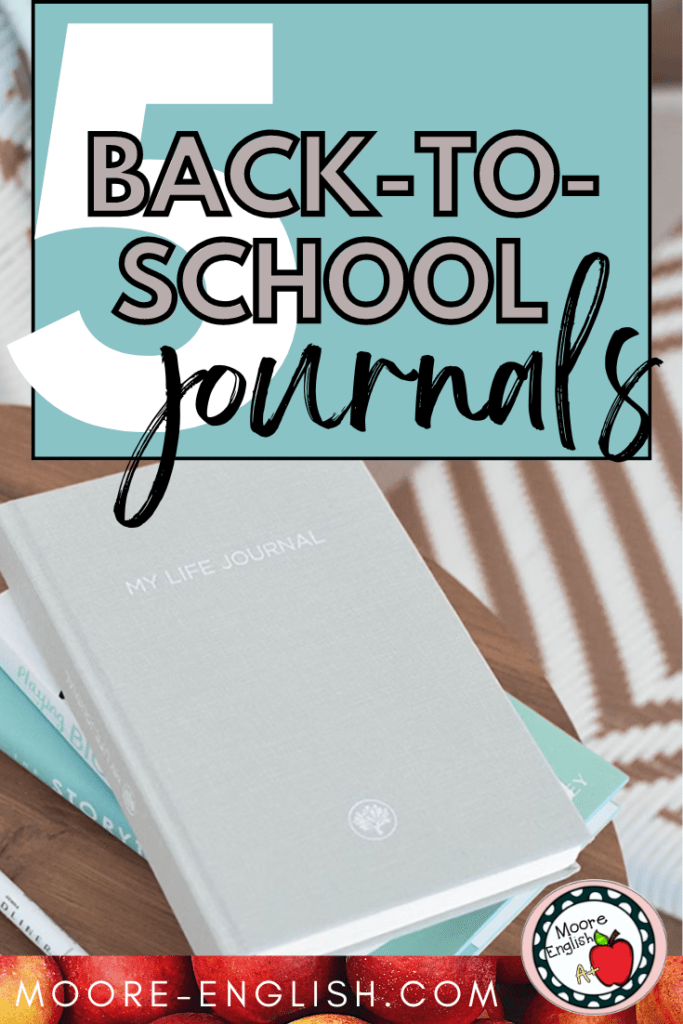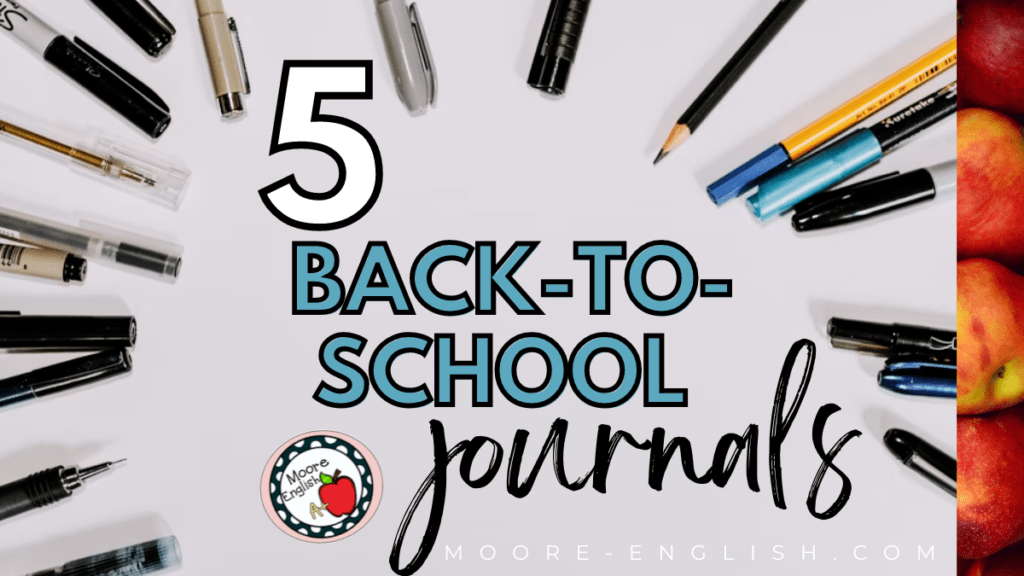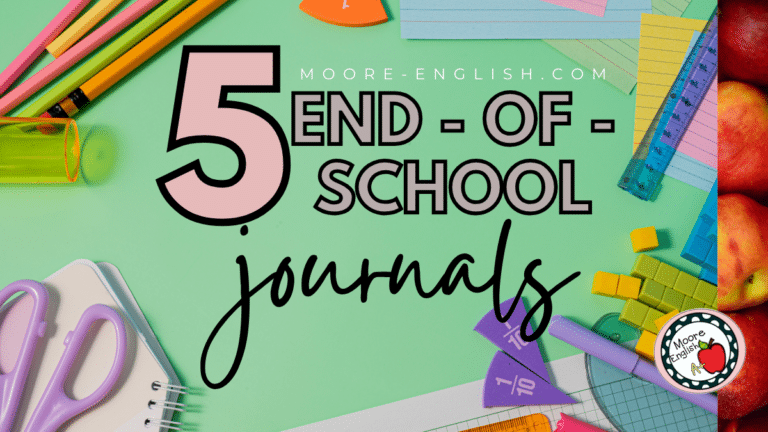It feels like an understatement to say there’s a lot to do at the start of a new school year. Sometimes it’s hard to keep track of everything, but two of my goals are to build classroom community and get to know students.
As an English teacher, I have the advantage of getting to know students through their writing. Sometimes student writing can be as revealing as a conversation. Reading and responding to student writing helps build relationships and gives teachers insight into student writing skills. (And, at the start of the year, a writing sample is always a must.)
Since back to school is stressful for everyone, I prefer low-stakes writing tasks for the first few days. For this reason, I really value back-to-school journal prompts. So today I want to share 5 of my favorite back-to-school journal prompts (and 5 alternatives if a back-to-school journal isn’t your thing.)
This post this post may contain affiliate links. Please read the Terms of Use.
Back-to-School Journal Prompts
At the beginning of the school year, I am intentional about the back-to-school journal prompts I choose for students. First, I’m looking for prompts I think students will be willing to address, so they have to be engaging. However, I also want back-to-school prompts that are going to help me build relationships with students, strengthen classroom community, and provide a writing sample.
The first time students write for me, I don’t usually ask them to share their writing. However, since shared writing is something we do often, the second or third back-to-school journal is usually something students will share. Our early writing shares are usually low stakes, but that lays the foundation for sharing better developed writing later in the year.
Here are 5 back-to-school journal prompts that have served me well over the years:
- What is something you are proud of? Why does this stand out to you?
- What is one thing you wish all teachers knew or understood about you? Why is this something you want teachers to know?
- What was your biggest takeaway from last school year? Why has this stayed with you?
- What are the characteristics of a good school year? What can we do to make this a good school year?
- Is school spirit important to you? Why or why not?
Since these have been such successful back-to-school journal prompts for me, I wanted to share them with you. You can grab all 20 of my favorite Back-to-School Journal Prompts. The prompts and directions are fully editable, so you can customize them, too!
5 Alternatives to a Back-to-School Journal
While I value back-to-school journal prompts, sometimes you want to mix it up. I often use back-to-school stations, and these writing activities are great compliments to any journals you may use.
First, a Back-to-School Bucket List is a fun way to get a sense of students’ goals. I love this writing activity because it works for all age and ability levels. Plus, it’s easy to share my bucket list with students.
Students also love to draw and doodle, so when I want an option that blends creativity and writing, I reach for this Back-to-School One Pager. Students provide insight but also have a chance to flex their creativity. These make for a charming back-to-school bulletin board.
Sometimes I’m looking for a more practical writing activity. When this is the case, I ask students to write an email of introduction. Teaching email etiquette early in the school year helps everyone, so I use this free Email Rubric to help students practice their best communication skills.
Similarly, a handwritten letter can be a good way for students to introduce themselves. This is a good option when students do not yet have access to their Chromebooks. To vary this idea, students can also write letters to their past or future selves or to their past teachers. Regardless of what students write, this Letter Rubric is my go-to.
Finally, my favorite alternative to the back-to-school journal is a Personal Coat of Arms. With this activity, students design a coat of arms that symbolizes who they are, their interests, and their values. Then, students write an explanation of the symbols they chose. The writing students produce can be as simple or as structured as you would like. For my money, this is an excellent opportunity to get a look at students organizational writing skills.














